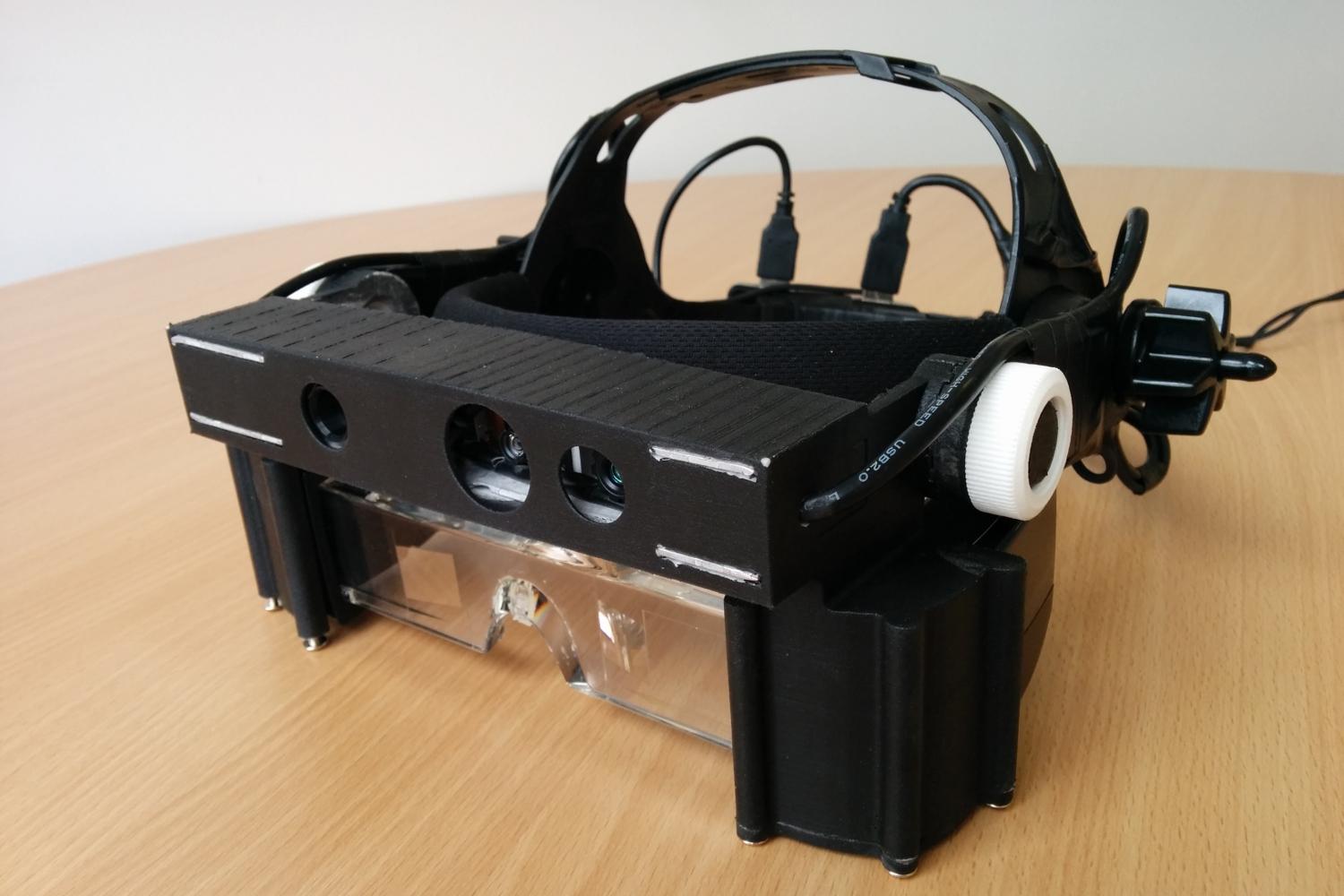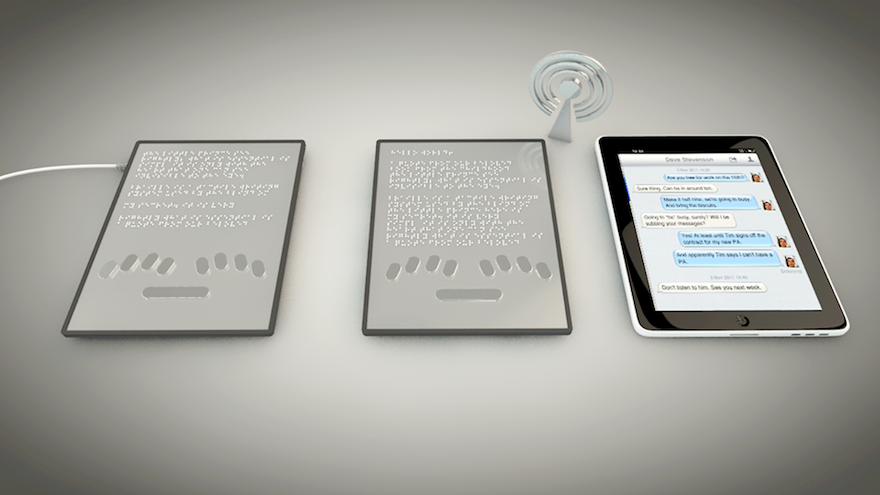Wearable Technology for Low Vision: A Game-Changer in Accessibility
Wearable Technology for Low Vision: A Game-Changer in Accessibility
Blog Article
Empowering Independence With Assistive Modern Technology for the Blind
The combination of assistive technology right into the lives of individuals with aesthetic impairments represents a significant development in advertising self-reliance and self-sufficiency. From cutting-edge display readers to advanced clever canes, these tools not only boost daily navigating and interaction yet also equip individuals to engage meaningfully in different aspects of life. As we explore the myriad advantages and real-world applications of these technologies, it ends up being vital to examine the hidden variables that add to their efficiency and the potential for future developments in this vital area.
Summary of Assistive Innovation

The growth of assistive modern technology is based in principles of inclusivity and empowerment. Developments in software program, equipment, and sensory improvements supply individuals with alternatives tailored to their details requirements. From screen readers that transform message to speech, to responsive gadgets that convey info via touch, these devices change the means people involve with their surroundings.
In enhancement to functional applications, assistive innovation promotes higher social inclusion and involvement in different fields, including education and work (AI-powered visual aids). As research and advancement continue to develop, the potential for assistive technology to further enhance the lives of aesthetically damaged people stays promising, leading the way for a more fair culture where everyone can prosper
Kinds Of Assistive Instruments
A range of assistive tools have actually emerged to sustain people with visual problems, each made to satisfy details needs and boost everyday functioning. These devices range from low-tech remedies to state-of-the-art advancements, supplying diverse alternatives for customers.
Low-tech devices consist of magnifiers and large-print materials that help in reading and writing. Braille devices, such as Braille slates and styluses, make it possible for responsive analysis and interaction. Orientation and mobility aids, like white canes, help customers navigate their environment securely.
On the greater end of the range, electronic magnification systems and display viewers supply significant support. Digital magnifiers permit customers to expand text and pictures on screens, while screen viewers transform digital content right into manufactured speech, helping with access to info on smartphones and computer systems.
Smartphone applications also play a vital function, supplying features like text acknowledgment and navigating support. Wearable technology, such as clever glasses geared up with augmented fact, is becoming an encouraging device to enhance situational recognition.
Advantages of Assistive Modern Technology
The integration of assistive technology substantially boosts the lifestyle for people with visual problems. These modern technologies equip users by advertising independence, allowing them to navigate their atmospheres much more properly and carry out everyday tasks with better simplicity. Display viewers and zoom software program allow individuals to accessibility digital info, fostering specialist and educational chances that might have previously been out of reach.
In addition, assistive devices such as wise walking canes and general practitioners applications offer real-time navigating aid, enhancing wheelchair and safety and security. This enhanced freedom not just boosts self-esteem however additionally motivates social involvement, allowing individuals to get involved more fully in their neighborhoods.
Assistive modern technology additionally helps with interaction, assisting customers connect with others with voice recognition and text-to-speech applications. This capability is crucial for maintaining connections and accessing essential details.
Furthermore, his explanation the personalization choices offered with lots of assistive technologies ensure that individuals can tailor devices to their certain requirements, even more improving usability and effectiveness. Generally, the benefits of assistive technology for individuals with aesthetic disabilities are extensive, advertising a much more inclusive society where everyone can seek their goals and aspirations.
Study and Success Stories
Highlighting the transformative impact of assistive modern technology, many case research studies highlight just how people with aesthetic disabilities have effectively integrated these devices right into their every day lives. One engaging example involves an university student that made use of screen reading software application to browse online sources and academic materials properly. This technology not just facilitated her education however additionally boosted her confidence in taking part in conversations and team tasks.
An additional instance study includes an expert that uses a smartphone application created for navigation and things recognition. By utilizing this application, he has actually gained back autonomy in both his personal and workplace, allowing him to commute independently and involve with coworkers more effectively.
Additionally, a senior citizen shared her experience with braille e-readers, which allowed her to access a substantial array of literature and remain attached with her area via publication clubs.
These success stories underscore the vital duty of assistive modern technology in promoting freedom, enhancing lifestyle, and advertising social assimilation for individuals with visual disabilities (Speech-to-text devices for low vision). By welcoming these cutting-edge tools, individuals can conquer challenges and confiscate possibilities that contribute to their individual and expert satisfaction

Future Trends in Assistive Innovation
Advancement in assistive modern technology is poised to redefine the landscape of assistance for people with aesthetic problems. Arising fads emphasize the assimilation of expert system (AI) and artificial intelligence, which enhance the performance of gadgets that help with navigation and info availability. AI-driven applications are now capable of translating visual information in real-time, making it possible for users to involve with their setting a lot more separately.
Moreover, the development of wearable modern technology is advancing swiftly. Smart glasses furnished with enhanced fact (AR) can offer audio summaries of surroundings, transforming just how individuals connect with public areas. These tools not just advertise autonomy however additionally foster social inclusion.
In Addition, the Internet of Points (IoT) is making homes smarter, enabling for smooth connectivity between assistive tools and everyday home appliances. This connectivity empowers users by enabling computerized responses and Our site voice-activated controls tailored to specific demands.
Conclusion
Finally, assistive technology plays an essential function in empowering people with visual impairments by boosting their self-reliance and involvement with their environments. The varied series of gadgets and applications readily available not just helps with navigation and interaction yet additionally advertises social assimilation and opportunities for expert and individual development. As advancements continue in this field, the potential for improving the lifestyle for those with visual problems will certainly increase, cultivating greater autonomy and empowerment.
Report this page